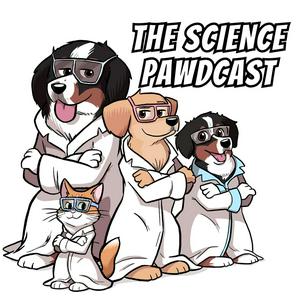Episode 12 Season 7: Autism Rates, Dire Wolves, and Puppy Training
Send us a textThis week we look to deunk myths about rising autism rates and explain the genetic and environmental factors at play, while exploring the resurrection of dire wolves through genetic engineering and how puppy cognition predicts adult dog behavior.• CDC data shows autism diagnoses increased from 1 in 150 children in 2000 to 1 in 31 in 2022• Approximately 80% of autism cases stem from inherited genetic variations with 200+ genes linked to early brain development• Better screening, diagnosis, and awareness accounts for much of the increase in autism rates• Scientists have genetically engineered puppies with dire wolf traits using DNA from ancient remains• The three pups—Romulus, Remus, and Khaleesi—received 20 gene edits targeting coat color, body size, and facial features• Study of 1,400+ puppies shows early cognitive traits persist into adulthood• Puppies good at following pointing gestures became more trainable adults, while those with better impulse control grew into calmer dogs• Understanding puppy cognition allows for customized training approaches that support lifelong well-beingSome Links and Studies:https://www.sciencenews.org/article/autism-adhd-risk-not-linked-prenatal-exposure-antidepressantsS. Gilman et al. Rare de novo variants associated with autism implicate a large functional network of genes involved in formation and function of synapses. Neuron, Vol. 70, June 9, 2011. DOI:10.1016/j.neuron.2011.05.021D. Levy et al. Rare De Novo and Transmitted Copy-Number Variation in Autistic Spectrum Disorders. Neuron, Vol. 70, June 9, 2011. DOI 10.1016/j.neuron.2011.05.015Y. Sakai et al. Protein interactome reveals converging molecular pathways among autism disorders. Science Translational Medicine, Vol. 3, June 8, 2011. doi: 10.1126/scitranslmed.3002166Sanders et al. Multiple Recurrent De Novo CNVs, Including Duplications of the 7q11.23 Williams Syndrome Region, Are Strongly Associated with Autism. Neuron, Vol. 70, June 9, 2011. DOI:10.1016/j.neuron.2011.05.015C. Schaaf et al. Oligogenic heterozygosity in individuals with high-functioning autism spectrum disorder. Human Molecular Genetics. doi: 10.1093/hmg/ddr243. Available online: [Go to]C.P. Schaaf and H.Y. Zoghbi. Solving the autism puzzle a few pieces at a time. Neuron, Vol. 70, June 9, 2011. DOI: 10.1016/j.neuron.2011.05.025I. Voineagu et al. Transcriptomic analysis of autistic brain reveals convergent molecular pathology. Nature. doi: doi:10.1038/nature10110Our links:Our Website! www.bunsenbernerbmd.comSign up for our Weekly Newsletter!Bunsen and Beaker on Twitter:Bunsen and Beaker on TikTokSupport the showFor Science, Empathy, and Cuteness!Being Kind is a Superpower.https://twitter.com/bunsenbernerbmd

